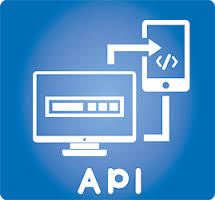
Introducing the fundamentals of the javascript language, becoming familiar with some of the different sources of a selection of javascript resources. Explore Google Chrome's javascript-based tools. Understand basic types. Acquire an understanding of the roles that arrays and objects play in a javascript program. All using JetBrains' WebStorm IDE.

Examine some of JavaScript's constructs such as conditionals, loops, arrays, objects, functions and scope. Understanding some concepts such as Truthy and Falsy values. simple static web site, include an external JavaScript file and use Google Chrome developer tools to debug into the script at runtime.

Connect to foursquare API and retrieve list of venues based on a simple location and venue keyboard. Log the venues to the console. Use an npm package to access the api.

Create a new simple node/HAPI project to serve a simple set of static views. Structure the project into controller, views, public assets and routes. The app offers no user interaction, apart from simple navigation.

Extend the application to employ layouts, templates, and partials. Include simple interaction features to track users and donations.

Incorporate sessions tracking into the app, defining a session strategy, protected and unprotected routes and cookie paramaters.

Replace the simple user and donation tracking with a database implementation - Mongo DB. Use the Mongoose ODM to create User + Donation models.

Include an object relationship from donor to user, and render a donors full name on the report view. Incorporate validation into registration view.

Include a mongoose seeder component in the application. Use this to validate a new Candidate model, preloading it with a json specified object graph.

Start the development of an API for the donation service, focusing initially on providing access to the Candidates model. Implement the API using simple REST principles.

Use a cryptographic application to manage keys and carry out encryption and authentication exercises

Use OpenSSL for key generation, encryption, authentication and digital certificate issuance

The objective of this lab is to learn about configuring TLS (formerly SSL) on web servers.

Expand the rudimentary test from the last lab into a more comprehensive suit of tests, exercising the api in depth.

The focus of this lab is this first part of the security assignment, which is broken down into the following steps:

Extend the api to support creating and deleting donations. Donations are associated with candidates, so we utilise the url to establish this relationship.

In this lab, we will walk through some examples in class of how to add various authentication-related features to a web application. You may adapt these for the purposes of your web application security assignment report. In particular we will examine:

Create a new standard java project specifically to test the API we have developed in donation-service-play project.

Commence an exploration of the Aurelia library by building small app that demonstrates so basic features.

In this lab, we will explore the proxy feature of a popular penetration testing tool.

Continue evolving the donation-client with login/logout feature + a mechanism for selecting revealing the various view/models.

Incorporate aurelia routers into donation-client. This will enable a more orderly evolution of the application, allowing new viewmodels to be introduced in a consistent manner.

Redevelop a version of donation-client in Typescript. This version should match the features in the Aurelia Lab 3 application.

Rework the donation-service class to communicate with the donation-web application. This will involve incorporating http components into the app and refactoring DonationService to use them.

Rework the donation-service class to communicate with the donation-web application. This will involve incorporating http components into the app and refactoring DonationService to use them.

Incorporate JWT security strategy into the application, securing the api routes. Rework the test infrastructure to fully exercises the secure API.






